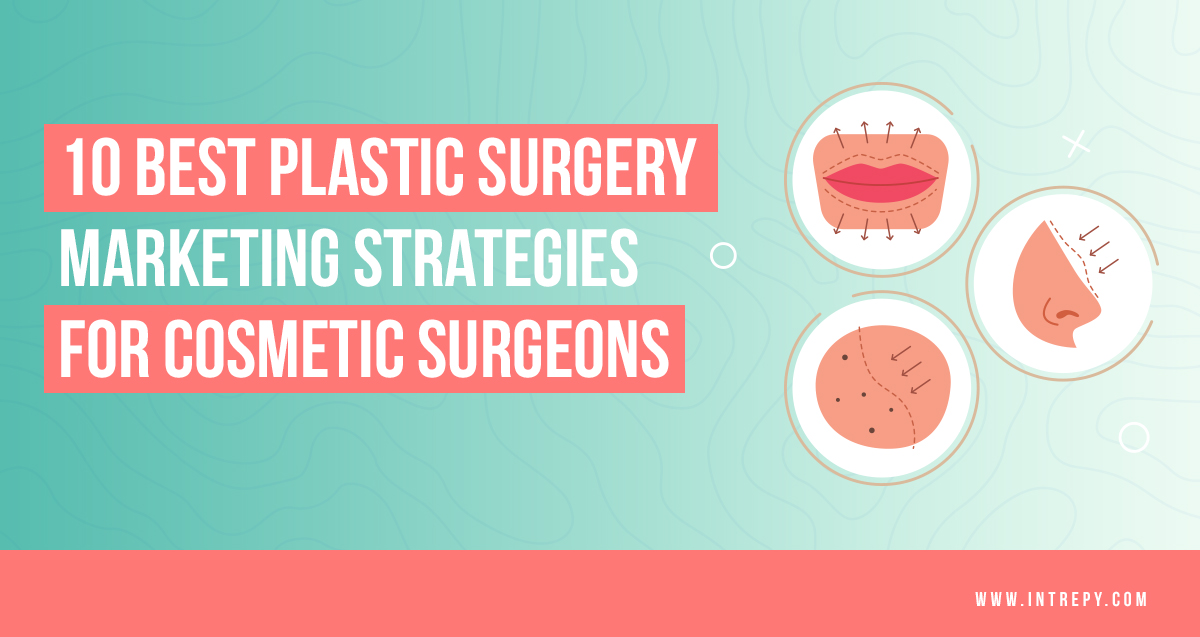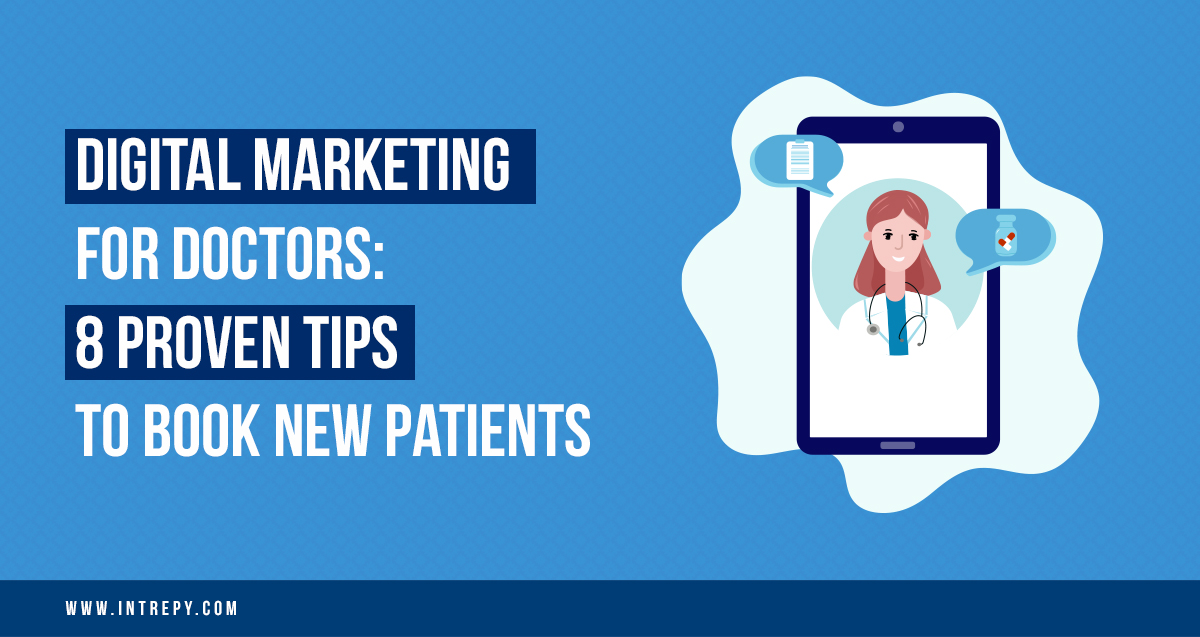Today we had the pleasure of speaking with the Senior Product Manager of Medtronic Spine & Biologics, Kim Rodgers. Kim manages the digital direct to consumer (patient) marketing strategy for the US Marketing team. Strategies involve owned, earned, and paid media sources.
Kim joins us today to discuss how you can improve your Google rankings by employing the tips and strategies she’ll share with us on this episode.
Healthcare Providers Connecting with Patients
Understanding how patients search for healthcare information is crucial for modern physicians. Nowadays, with Google readily accessible on phones and laptops, patients are increasingly using this platform to seek solutions for symptoms they’re experiencing, procedures they are looking for, or to find healthcare providers. Recognizing the immense influence of this platform and how patients utilize it can prove invaluable for healthcare providers.
The COVID-19 pandemic has indeed brought about a significant change in how physicians interact with patients. With physical consultations becoming less frequent, healthcare providers have been compelled to rethink their engagement strategies.
The ecosystem of virtual patient engagement has grown in importance, and understanding this environment is critical. One of the foundational elements of this ecosystem is Search Engine Optimization (SEO) which helps a website to be visible on Google, a topic we’ll delve into further.
It’s vital to understand the significant role healthcare providers’ websites play in this context. When optimized correctly, these websites increase visibility on search engines, especially Google.
Once patients find these websites, the next step is to nurture their journey by providing the right content and facilitating meaningful interactions. This process helps build their confidence in the healthcare provider and guides them in making the right choices for their health.
However, the question remains: are healthcare providers fully aware of the potential their website holds? Are they utilizing the vast data and resources available on their websites effectively?
Concerns over ranking against competitors or enhancing their website’s visibility are common, pointing towards the need for a deeper understanding of their website’s role within the larger marketing ecosystem.
The better they understand this, the more effectively they can use their website as a tool, just like patients use Google as a tool to find them.
Is Your Medical Website Effective?
Google Analytics is an invaluable tool for understanding your website’s performance, especially if you’re a healthcare provider. This free resource enables you to track visitor data: where they come from, what they clicked on, and what they viewed, or downloaded.
Despite the potential complexity, engaging with Google Analytics should be non-negotiable even for those unfamiliar with it.
An agency can certainly help navigate the depths of Google Analytics, but you should be involved, too. You need to see the data that exists on your site. As a high-level individual, your primary focus should be on-site analytics and visitor growth, which are crucial.
However, diving deeper into the data can be beneficial, providing insights like the geographical locations of your visitors. Ideally, a majority of your visitors should be within driving distance of your practice.
Another critical element is understanding conversions: people booking appointments, filling out forms, and making phone calls. When set up correctly, this information should be available to you.
Ultimately, it’s about more than attracting many visitors to your site, it’s about converting these visitors into patients walking through your doors.
While it may be new for some physicians, understanding and leveraging this data is vital. Many are unaware of these tools and the data available to them, often due to the demands of their practices.
However, once these tools, like Google Analytics and Google My Business, are brought to their attention, they begin to see their value. Understanding why a competitor ranks higher on search results, for instance, can be enlightening.
Regardless of the perceived complexity, healthcare providers are encouraged to engage with these tools and rely on experts when needed. After all, they are free tools at your disposal.
Utilize them to understand your website data, set clear goals, and devise a plan to reach those goals. It’s a worthwhile investment of your time and effort.
How to Enhance Your Online Healthcare Presence
We’ve already discussed the importance of understanding your digital presence, but let’s delve deeper.
Particularly, let’s consider the scenario of a spinal surgeon looking to improve their online visibility. One of the critical aspects of this process is understanding why you or your competitors appear in Google search results.
When a healthcare provider wants to enhance their marketing in relation to Google, the first recommendation is simple: Google yourself.
This self-assessment provides a snapshot of your digital health. It’s important to understand how Google has indexed you and what’s associated with your name. One simple search can reveal opportunities for improvement.
For instance, you might find that your contact details are outdated on certain health directories. So, the first step in improving your online visibility is a bit of self-research.
When it comes to enhancing your online visibility, consistency is key. How your name appears online, whether it includes a middle initial or is a longer or shorter version, should be consistent across all platforms. This consistency extends to your name, address, and phone number, often referred to as your “NAP.” This is your digital business card, and it needs to be accurate.
Google aims to provide users with the best search experience possible, delivering the most accurate answer to their queries each time. If your information is inconsistent, Google will have less confidence in presenting your details in search results, leading to reduced visibility. This could result in potential patients finding incorrect or outdated information.
A vital tool in this optimization process is Google My Business. Essentially, it serves as your local gateway, allowing your practice to be discovered in local search results. It’s free and will enable you to specify your industry, for instance, distinguishing yourself as a healthcare provider.
When setting up and optimizing your Google My Business listing, the most crucial aspect, besides your NAP, is your category selection. This category should be specific and strategic. You can choose one primary category, such as “Spine Surgeon,” and up to four additional categories.
This choice maximizes your likelihood of appearing in various relevant search results. Too many physicians simply label themselves as “Doctor” or “Medical Clinic,” which can lead to inaccurate classification and reduced visibility.
So, consider your category selection a critical next step beyond merely setting up your Google My Business profile.
How to Utilize Your Google My Business Profile as a Healthcare Provider
In digital marketing, the rule of thumb is that the more complete your profile, the better your performance. Google, as well as other platforms like Facebook and LinkedIn, tend to favor complete profiles.
In this context, the inclusion of images becomes crucial. Especially for healthcare providers, who, along with attorneys, are uniquely positioned to have person-based profiles on platforms like Google My Business. It’s essential to upload your headshot, images of your office interiors and exteriors, and, if available, pictures of patient care.
Visual elements contribute significantly to creating a sense of security and trust with potential patients searching for you online. Such visuals enhance the perception of you as a real person, providing a glimpse into what an interaction with you would be like.
This strategy is not only beneficial for converting the people who find your page but also helps you rank above competitors.
However, while we’ve discussed the accuracy and precision of your Google My Business profile, we’ve overlooked a critical factor: reputation. In the healthcare community, reputation can significantly influence your ability to attract new patients and expand your outreach efforts.
Without a positive reputation, reflected through patient testimonials and reviews, you could lose potential patients. So, why do reviews matter?
Reviews provide social proof and credibility to your services, giving potential patients insight into the experiences of others. They serve as a testament to your service quality, impacting the decision-making process of prospective patients.
Therefore, maintaining a positive reputation online is paramount in ensuring the growth and success of your practice.
Why Reviews Are Important for Your Practice
The value of reviews in the healthcare space is undeniable. Patients often rely on the experiences of others to make informed decisions about their healthcare providers. This extends not only to the quality of care but also to the authenticity of the provider.
The expectation for a flawless, five-star rating is unrealistic and can appear disingenuous. It’s important to remember that we’re all human; we won’t achieve a perfect likability score.
However, a solid rating of around 4.2 out of 5 can indicate a balanced and authentic perception of your practice.
A crucial part of managing reviews, especially negative ones, is understanding how to respond appropriately. Your response can demonstrate your willingness to acknowledge issues and improve.
For instance, some negative reviews might stem from factors outside your control, like long wait times or insurance policy misunderstandings.
A prospective patient reading such a review may distinguish between a patient care issue and a more common frustration that wouldn’t affect their decision to choose your practice. Hence, the focus should not be on striving for perfection but on maintaining transparency and openness in reviews.
The statistics also support the importance of reviews. Recent data suggests nearly 90% of patients look at one or more reviews before booking an appointment with a provider. Ignoring this fact could be detrimental, leaving you vulnerable to competition.
If you are consistently receiving negative reviews, it signals a need for improvement. This might involve addressing your bedside manner or rectifying issues at the front desk.
Avoiding reviews only hampers your opportunity to improve your services and your reputation.
In conclusion, reviews present an opportunity for growth. They allow you to take the good with the bad and view each review, especially the negative ones, as a chance for improvement.
With the right approach to managing and responding to reviews, you can create a more authentic and trustworthy image for your practice.
How to Collect and Manage Patient Testimonials
The collection and management of reviews require a strategic approach, and implementing sophisticated software can significantly streamline the process.
Providers who have successfully ingrained the practice of requesting reviews have reaped substantial benefits, amassing hundreds of reviews over time.
However, it’s also important to remember that relying solely on human initiative can lead to oversights, given that reviews may not be the primary focus of healthcare providers.
To address this, it’s important to integrate review generation seamlessly into existing workflows. The adoption of review management software, like CaptureMD, can help automate the process while reducing the possibility of human error.
Of course, while automating the process, we must ensure the utmost level of security and compliance with regulations, especially those related to protected health information (PHI).
Moreover, it’s beneficial to request reviews as close to the point of service as possible. When a patient has just checked out, the experience is still fresh in their mind, making it an ideal time to request a review.
We often underestimate the willingness of patients to leave reviews, particularly if they are satisfied with the service. By simply asking for their feedback, you may find a significant increase in the number of positive reviews, which in turn can significantly boost your online reputation.
How to Stand Out as a Physician
Many physicians reveal a common desire – to make their voices heard, to relay their messages clearly, and to establish a unique presence in their field.
This need for individuality is particularly notable among both independent surgeons and those working within large organizations or hospital affiliations. How can they differentiate themselves within such vast entities?
This challenge may seem daunting, particularly for surgeons employed by hospitals who may face certain limitations or for those in larger practices where a senior partner commands most of the attention.
However, there are ways to amplify one’s unique voice. First and foremost, identify your channels and opportunities for exposure.
Do you have influence over your social media platforms? Can you make updates to your webpage, add videos, or provide additional information to showcase your unique approach and personality?
In some cases, physicians may need to create their own websites, which can provide comprehensive patient education, resources, and information. Of course, these personal platforms should acknowledge and link back to the hospitals or institutions where the surgeons practice.
This strategy not only gives physicians a platform for their voice but also enables them to offer valuable resources to patients, fostering a sense of connection and understanding.
Patients are often in search of quality interactions with their providers, a desire frequently echoed in positive reviews. Thus, utilizing video content or an independent website dedicated to patient education can significantly enhance this connection, making patients feel they are receiving more quality time and understanding their provider better.
However, all of this hinges on one crucial action – asking. It’s impossible to know what you can or can’t do until you’ve asked the question. If your hospital or organization doesn’t have documentation regarding digital activities, ask about it.
If you’re only allowed to post videos on LinkedIn, then work within those constraints. Large hospital systems likely have guidelines in place regarding what you can or cannot do, so it’s crucial to inquire about these protocols.
From there, you can formulate a plan based on the resources available to you. The key is to take that first step and invest in your unique voice.
Website SEO for Surgeons
If you provide specific treatments or manage certain conditions, it’s essential to have dedicated pages for them. Google’s algorithm favors websites with specific, focused content, enabling better ranking in search results.
A search for “knee replacement specialist near me” or “spine fusion near me”, for instance, would likely yield results wherein Google explicitly mentions those terms on the practitioners’ websites. This correlation between search terms and site content can significantly boost your online presence, but it’s only possible if your website has well-structured comprehensive content.
This concept ties in well with search engine optimization (SEO) for your practice’s website: physicians should consider grouping patients and their respective conditions according to the seasons.
By aligning medical content to seasonal patterns – like increased football injuries during the fall or deer stand injuries during hunting season – it could resonate more deeply with the audience.
Such a strategy could potentially enhance the practice’s social media calendar and content strategy by introducing relevance and sparking interest in these timely topics. This unique approach can help establish a recognizable voice in the medical community and make you the first person patients think of when certain seasonal ailments arise.
It’s crucial to ensure your website accurately depicts the range of services you provide. The first glance at your site should reassure visitors that they’ve found the right place.
In short, avoid the dreaded bulleted list of services in favor of more thorough, patient-focused content.
What You Should Include in Your Healthcare Marketing Strategy
Delving further into the discussion about marketing, thought leadership, and content development, it’s apparent that these tasks are both all-consuming and ever-evolving.
As full-time professionals in this space, we face new challenges every day. As such, it begs the question: What do we do to assist physicians and surgeons with these tasks? How are we aiding them when they seek advice about a new machine or procedure?
When a surgeon adopts a new procedure or therapy, it’s important to supply an abundance of educational content to inform their patients about the new technology or procedure.
It’s crucial to look into your online representation and strategize ways to improve it before considering other elements.
The last thing you want is for potential patients to find you online, click your link, and then lose confidence due to a lackluster website. In essence, there’s some housekeeping involved in ensuring a professional online presence.
It’s also a reminder that, as with anything else, a lot of moving parts come with this territory.
Wrapping up Digital Marketing for Surgeons
Let’s rewind a bit and return to the basics. If we try to understand this all at once, it could easily become overwhelming. Instead, it’s better to approach it in bite-sized pieces.
The first step is to grasp what the ecosystem looks like. For many doctors, learning about how Google operates can be a lightbulb moment.
They come to realize why they need a website, why reviews matter, and why listings are crucial. The process can feel like a floating puzzle, but as the pieces fall into place, clarity emerges.
Indeed, the world of marketing can seem complex, riddled with choices and intricate strategies. However, as we break things down into manageable chunks, the larger picture becomes more comprehensible.
Tweetable Quotes:
“Reviews to me are very important because it shows that you’re real. It also is an extension of someone else’s experience and it’s building an advocacy for you.” – Kim Rodgers
“The last thing you want is for them to find you and get to your website and not feel confident that they’ve clicked that link and found the right person.” – Kim Rodgers
Resources Mentioned:
You can connect with Kim on LinkedIn. Visit their website https://www.medtronic.com/us-en/index.html
Subscribe & Leave a Review
Subscribe to the Patient Convert Podcast and never miss a new episode!
Please support the podcast by leaving a Review
Connect with us on social media:
What We Do
Get a free practice marketing assessment – Intrepy Healthcare Marketing
Check out Kelley’s physician liaison training platform – Physician Liaison University
Check out our Physician & Social Media Video Creation tool – CaptureMD
Interested in being a guest on the podcast? Click Here to apply
Thanks for listening. Justin & Kelley Knott



